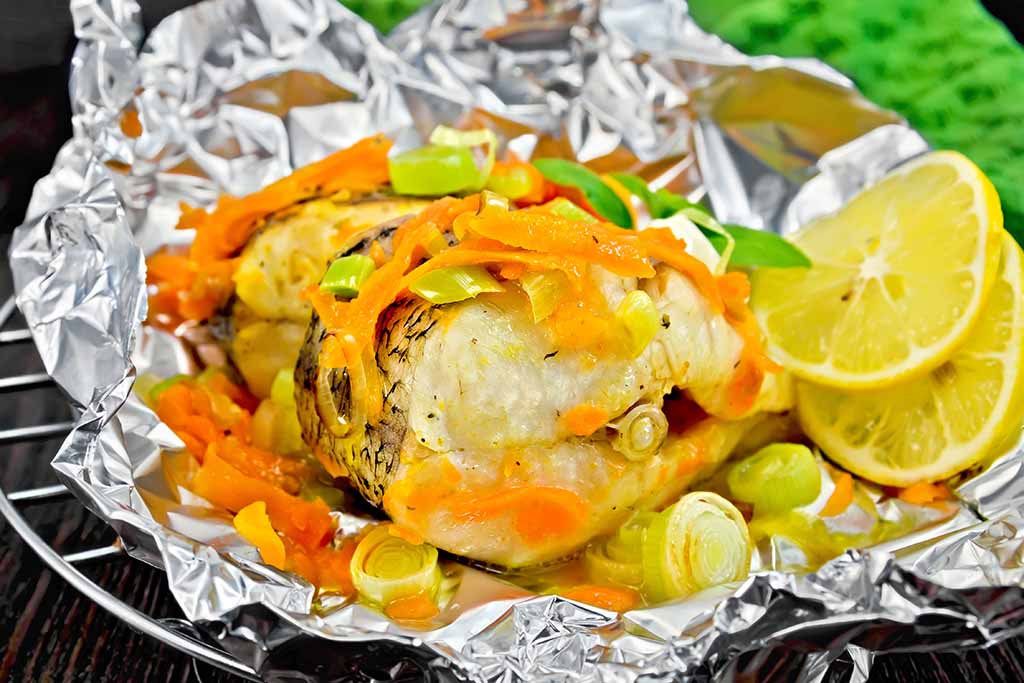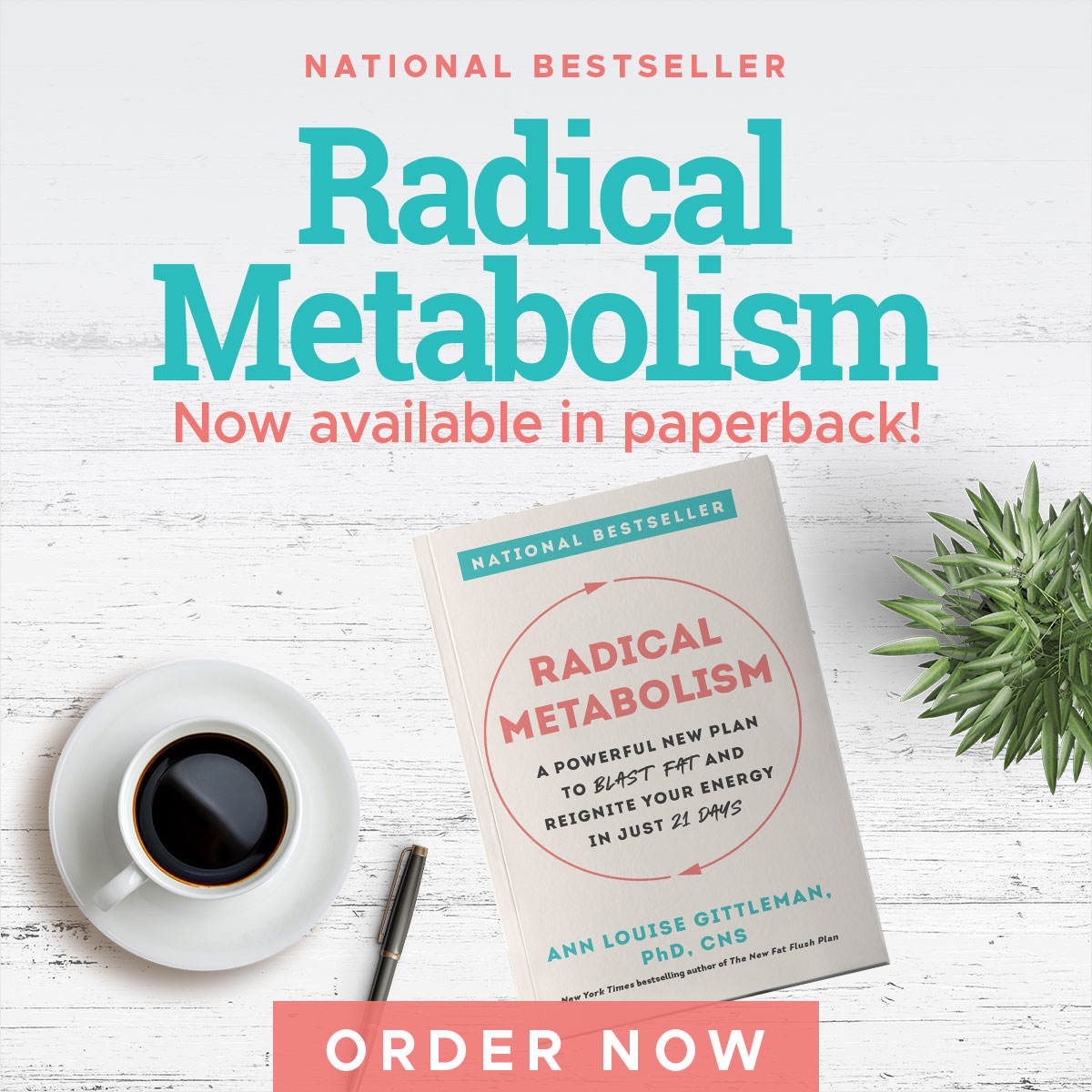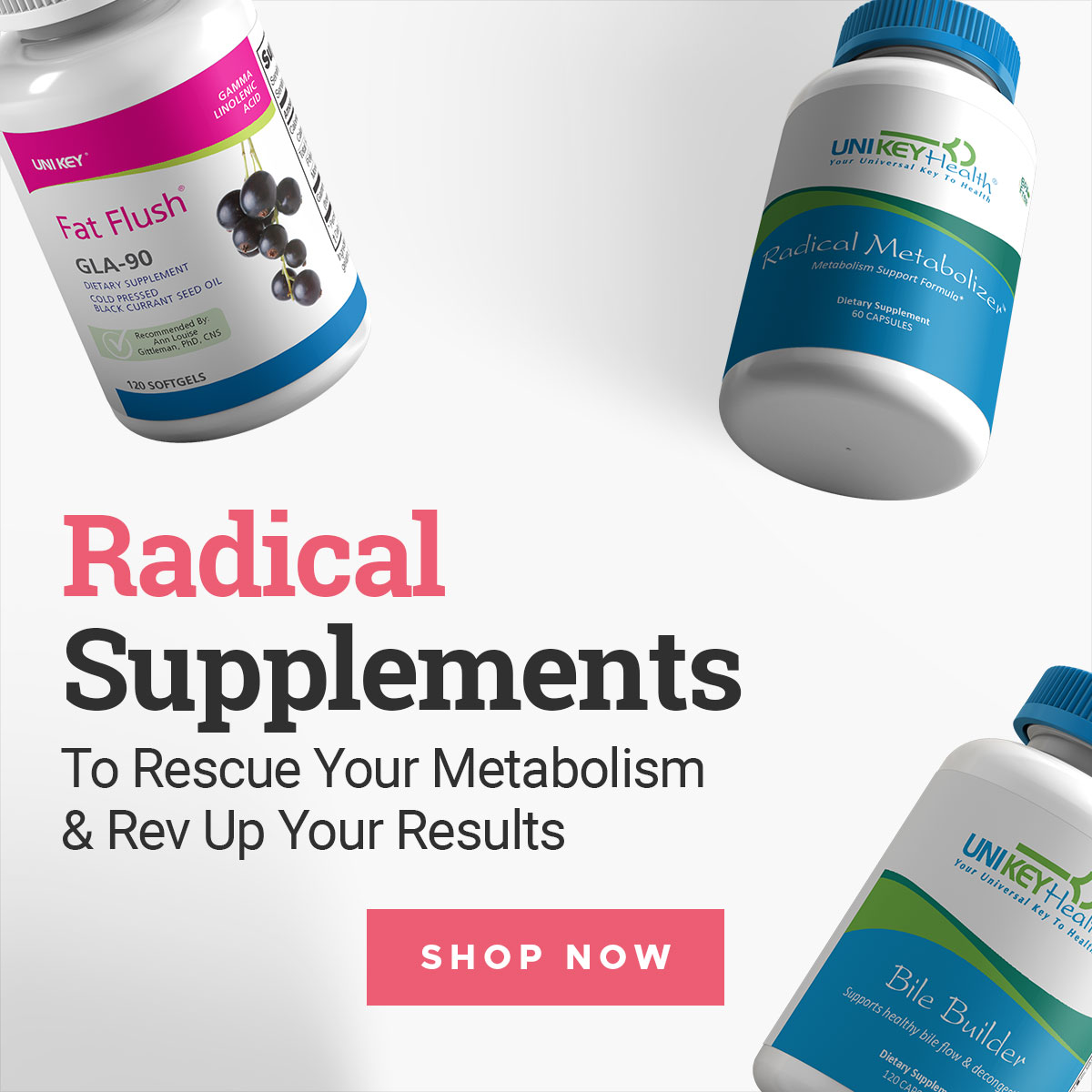Aluminum-Proof Your Kitchen – Starting with Aluminum Foil
Excerpted from Radical Metabolism by Ann Louise Gittleman, Ph.D., C.N.S.
Toxins are ubiquitous in our products today. Often you can’t see them, smell them, or taste them—but you can eliminate them if you know where to look. Let’s start with the most pressing of our toxic concerns: aluminum.
]It may seem as though we live in an ultracivilized, totally sanitary environment, but there are in fact some potentially dangerous toxicities common to almost every American kitchen. A big one is aluminum. If you don’t do anything else, get rid of your aluminum—this is the most important thing to glean from this entire chapter. Aluminum can accumulate in your kidneys, brain, and gastrointestinal tract, where it can cause a multitude of problems. Aluminum irritates mucous membranes, destroys pepsin (a key digestive enzyme), and hampers your body’s utilization of calcium, magnesium, phosphorous, and vitamin A. It’s also well linked to neurodegenerative disorders, such as Alzheimer’s disease. You do not want this in your body! A good place to start is by banishing aluminum foil from your kitchen. No food or drink, especially acidic foods, such as tomato-based products, should be cooked, reheated, or covered in aluminum foil. But the risk is not limited to acidic foods. According to a 2006 study, red meat cooked in aluminum foil showed an aluminum increase of 89 to 378 percent; and poultry, 76 to 214 percent. The higher the cooking temperature and the longer the cooking time, the higher the aluminum levels rose. Instead of foil, use unbleached paper or parchment paper. (You can line aluminum cookie sheets or muffin tins with unbleached muffin cups.) Parchment, which is made from wood pulp, is now available in most grocery stores and can be used for baking, poaching, and roasting. It’s ideal for vegetables and fish (as New Orleans cooks have known for years) and excellent for retaining flavor because the food cooks in its own juices. There are even parchment cooking bags on the market now. Detoxifying your kitchen is also a good time to replace aluminum-containing baking powders, as well as deodorants and antiperspirants, to reduce your overall exposure.
Is Aluminum Lurking In Your Cookware?
Aluminum can be in everything from pots and pans to tea kettles, measuring cups, cookie sheets, loaf pans, graters, strainers, and pie tins. It can even be in your tap water because aluminum salts are used in municipal water purification systems. How can you tell if your metal kitchen gear contains aluminum? Here’s a trick—grab a magnet and touch it to the item in question. If the magnet sticks, you are basically home free when it comes to aluminum (although you still need to consider whether the item contains nickel). If the magnet doesn’t stick, then it most likely contains aluminum. Use this technique to examine your pots and pans and other kitchenware. If your stainless-steel cookware sticks to a magnet and is not pitted from harsh scouring or steel wool, then it’s probably Radical Metabolism “kosher.” On the other hand, if it doesn’t stick or is pitted, it’s time for a replacement.





Hello. This post was extremely interesting,
particularly because I was looking for ideas on this subject last Thursday.
Best regards,
Mead Dencker
I’ve always liked stainless steel, I guess because my mother used it. I didn’t know there was such a health benefit compared to aluminum.